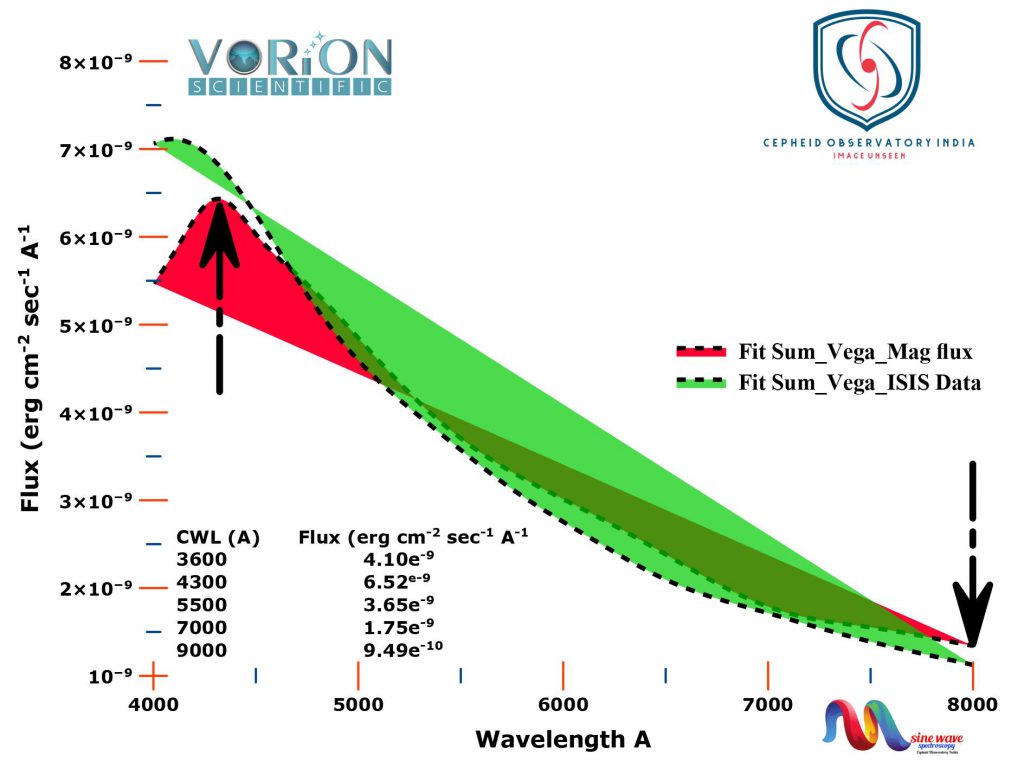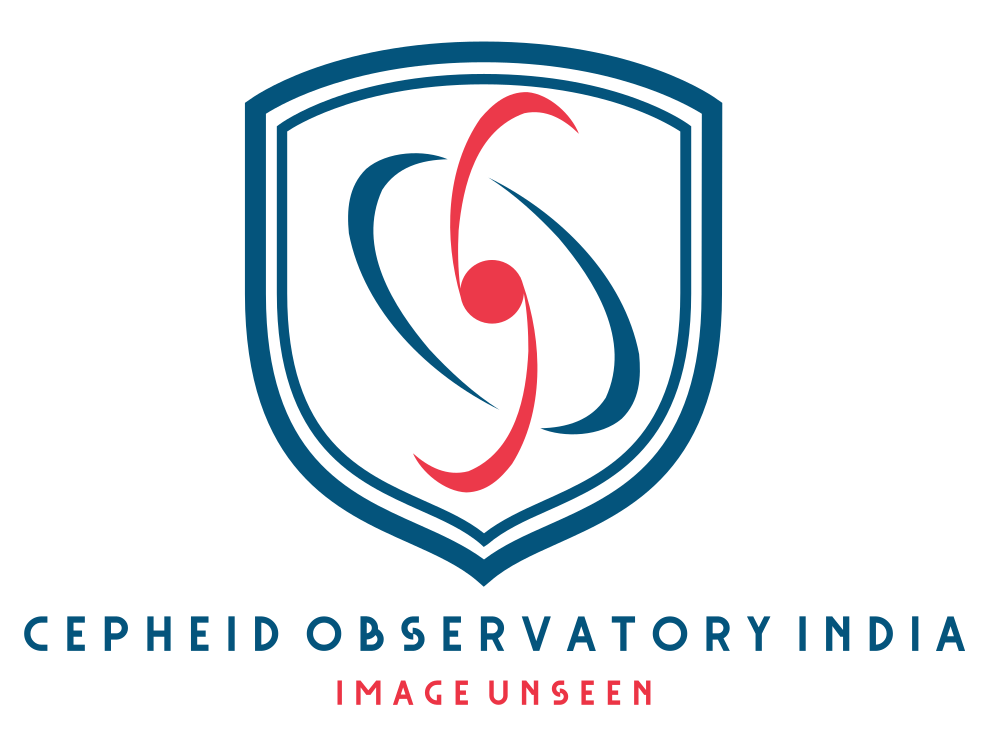Here is Flux comparison of ISIS data and flux generated by NASA-IPAC tool (https://irsa.ipac.caltech.edu/…/data…/tools/pet/magtojy/) for Vega.Procedure is:1. Flux intensity drag of ISIS data using FIT files>>>then best fitting>>>then plotting w.r.t wavelength.2. Pickup flux intensity using star mag (NASA-IPAC tool) for UBVRI wavelengths>>>then interpolation of all wavelengths points similar to point no. 1>>>then best fitting>>>then plotting w.r.t wavelength. The flux intensity for UBVRI filters at central wavelength are mentioned in graph below.The star magnitude are taken from SIMBAD (but a better catalog may be used if available). In graph, we can compare that energy fluxes are almost similar from range between pointed arrows. The minor difference may be due of some off magnitude of star vega in SIMBAD database or fitting done.We see that fluxes deviate from 4200 A towards UV region. We assume that this is because of fall of CCD sensitivity (silicon band gap, works well from 400nm to 900nm and maintain same sign of slope (dF/dA). We think, this is the reason that, professional astronomers use V/R/I band filter response for absolute flux calibration. We did not find any document where U/B filters response were used for flux calibration. The change of slope of flux vs. wavelength may be a reason (not sure yet).But If We plot from 400nm to 700nm, We find both methods satisfactory. Science is fun!..![]()

